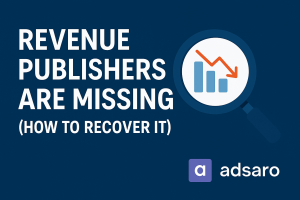In today’s digital age, advertising is a powerful tool that influences consumer behavior and brand perception. However, when advertising is misleading or deceptive, it erodes trust, damages brand reputation, and misguides consumers. It ensures fairness, honesty, and transparency, creating meaningful relationships with audiences while promoting responsible business practices. It goes beyond legal compliance to reflect moral integrity in marketing. By embracing ethical advertising, businesses foster trust, credibility, and long-term customer loyalty. This blog explores the key principles, benefits, and best practices of ethical advertising, offering insights into how brands can implement it effectively.
What is Ethical Advertising?
It refers to the practice of promoting products or services in a truthful and responsible manner. It ensures that advertisements do not manipulate or deceive consumers but instead provide accurate and relevant information. Ethical advertising aligns with moral values and legal standards to create a fair marketplace, promoting trust between brands and consumers while upholding the integrity of marketing communications.
Core Principles of Ethical Advertising
It is built on several key principles. Honesty and transparency are fundamental, requiring brands to provide accurate information without exaggeration or false claims, while also disclosing sponsored content and partnerships. Respect for consumers means avoiding manipulative tactics, such as fear-based advertising or hidden fees, and ensuring that ads do not exploit vulnerable populations, including children and the elderly.
Social responsibility involves avoiding the promotion of harmful or illegal products and ensuring that advertisements support positive societal values such as inclusivity and sustainability. Privacy protection is essential, requiring compliance with data protection regulations like GDPR and CCPA, and ensuring that users’ personal data is not exploited for unethical targeting practices. Lastly, fair competition means avoiding defamatory or misleading comparisons with competitors and clearly communicating pricing and offers without hidden conditions.
Benefits
Ethical advertising offers numerous advantages to businesses and consumers. First, it helps build consumer trust, as transparent and honest ads foster brand credibility and long-term customer relationships. A strong reputation follows, as ethical brands attract loyal customers and positive word-of-mouth referrals. Compliance with advertising laws reduces legal risks by preventing fines, lawsuits, and reputational damage. Ethical advertising also boosts customer engagement by resonating more effectively with audiences, leading to higher interaction and conversion rates. Lastly, adopting ethical advertising practices encourages sustainable growth by supporting responsible marketing strategies that lead to long-term business success.
Best Practices
To ensure ethical advertising, brands must follow best practices. Being truthful and clear is crucial. Businesses should use straightforward language. They must avoid misleading statements. Terms and conditions for discounts, offers, and guarantees should be clearly disclosed. Following advertising regulations is essential. Companies must comply with industry standards from organizations like the FTC and ASA. They should stay updated on legal requirements for digital ads, influencer marketing, and data privacy. Brands must avoid false or manipulative tactics. These include fake scarcity, clickbait, and exaggerated claims. Testimonials and reviews should always be genuine.
Respecting consumer privacy is essential. Businesses should obtain consent before collecting data. Users must have the option to opt out of targeted ads. Promoting social responsibility is important. Brands should align messaging with ethical and sustainable values. They must avoid stereotyping or discriminatory content. Transparency about sponsored content is crucial. Businesses should clearly label sponsored ads and influencer promotions. They must disclose incentives for product endorsements.
Examples of Ethical Advertising in Action
Several brands exemplify ethical advertising through their responsible marketing strategies. Patagonia emphasizes sustainability and environmental responsibility in its campaigns. Dove promotes body positivity and self-esteem by representing real and diverse individuals in its ads. Ben & Jerry’s advocates for social justice and fair trade practices in its advertising, reinforcing the idea that businesses can use ethical marketing to drive positive change.
Conclusion
Ethical advertising is not just a legal requirement but a moral obligation that reflects a brand’s integrity and commitment to responsible business practices. It is essential for building long-term consumer relationships based on trust, transparency, and fairness. By implementing ethical advertising strategies, businesses can reduce legal risks, enhance their reputation, and create a positive social impact. Ethical advertising fosters a responsible digital ecosystem where businesses thrive by prioritizing honesty and consumer well-being. In a world where consumers are becoming more conscious of corporate values, it serves as a key driver of sustainable business growth and long-term success.








Leave a Reply